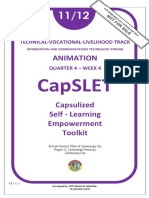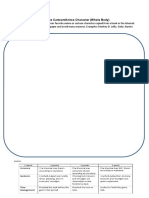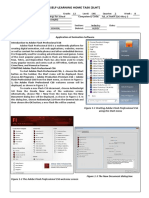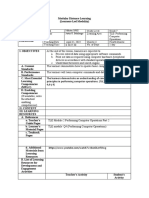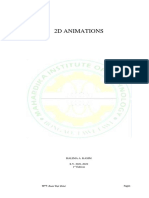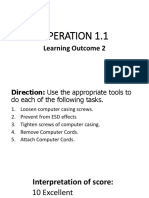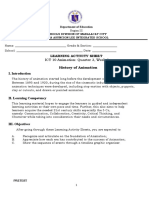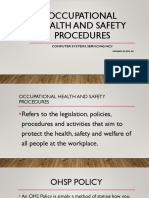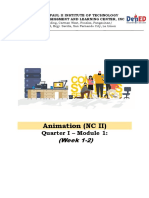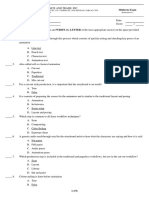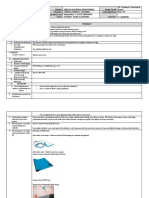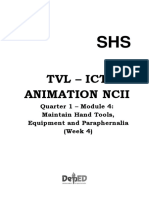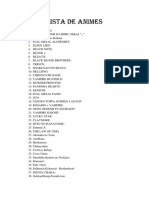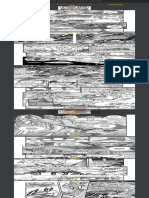SHS
TVL – ICT
ANIMATION NCII
Quarter 1 – Module 3:
Inspect Hand Tools and
Equipment
(Week 3)
� 1
What I Need to Know?
This module was designed and written with you in mind. It is here to help you
understand Animation. The scope of this module permits it to be used in many
different learning situations. The language used recognizes the diverse vocabulary
level of students. The lessons are arranged to follow the standard sequence of the
course.
The module will cover the lesson:
● Lesson 1 – Inspect hand tools and equipment received in animation
After going through this module, you are expected to:
1. check the list of tools and equipment to be requested per job requirement;
2. inspect the requested tools and equipment; and
3. assess the condition of all hand tools and equipment for proper operation and
safety.
1
�What I Know?
REQUISITION PROCEDURES
In recent years, there have been many changes in animation production in terms of
working in the production process.
1. Accomplishing a requisition slip in any animation production may vary.
2. Requisition slip is done to determine the scenes and load footage to be given to
the animator.
3. The animation director is responsible for evaluating the scene against the
storyboard and the footage, and for assigning scenes to the animators from his
or her lineup.
4. The animation production assistant will give the requisition slip to the
animator which will be turned over to the assistant director.
5. The assistant director evaluates the slip and indicates the run assignment
previously made to the animator.
6. After all the scenes are encoded by the animation production assistant, the
animator works on the scenes.
7. The animator gets the requisition slip back with the scene folders after the
approval of the animation director.
8. The animation production assistant checks for the actual footage against
claimed footage and informs the animator in case there are discrepancies.
9. Then the scene folder will be forwarded to the line test operator.
Ando, 2016
CHECKING AND INSPECTING MATERIALS, TOOLS, AND
EQUIPMENT
It is necessary to inspect and check materials and tools for defects and damages
before receiving them so that one can ask for a replacement if found defective. Here
are ways to check whether materials and tools are in good condition and complete:
● Check if the quantity and specification of the materials and tools are complete.
● Inspect the condition of the devices physically. Ensure the components are
complete and damage-free.
● Check the products and equipment accessories. Make sure nothing is missing.
● If any of the materials or tools is found defective or missing, inform the
incharged person immediately and ask for a replacement for the defective
material or tool.
● Sign the requisition form upon receiving the materials and tools to ensure that
you receive them.
● Always handle the materials and tools carefully.
2
�ASSESSING THE CONDITION OF TOOLS AND EQUIPMENT FOR
PROPER OPERATION AND SAFETY
It is obligatory to observe the basic guidelines regarding the use of hand tools in any
workplace to avoid accidents and injuries. Below are ways to check the safety use of
tools:
● Select the exact tool for the task/job.
● Make sure to use tools in good condition. If any defects are observed,
detected, or found, dispose of the said device immediately to help prevent
injury.
● Tools need to be inspected for any damage. In case of defect or damage,
mark the tool as defective or damaged or faulty, and schedule for repair or
replacement.
● Pointed tools like pencils should not be put within one's pocket.
● Tools must be used in compliance with the instructions of the manufacturer
and must be fit for the purpose for which they are to be used.
● Place frequently used tools in an area that is easy to locate or access.
● After every use, it is necessary to clean the tools and equipment.
● Keep the tools and materials to its proper storage when not in use.
● All tools to be kept in good condition with regular maintenance.
● Tools or equipment handles should be kept dry to avoid slipping when in
use.
● The right protective equipment for the tool and equipment must be used.
● Maintain electrical devices free from dust or debris and make sure that they
are free from oil and grease.
● To improve productivity and avoid injury, make sure to keep the work area
tidy.
● Keep a maintenance schedule for all the equipment and tools to maintain
its function and increase the service life.
● This will help ensure that the tools and equipment are protected and safe
working order.






